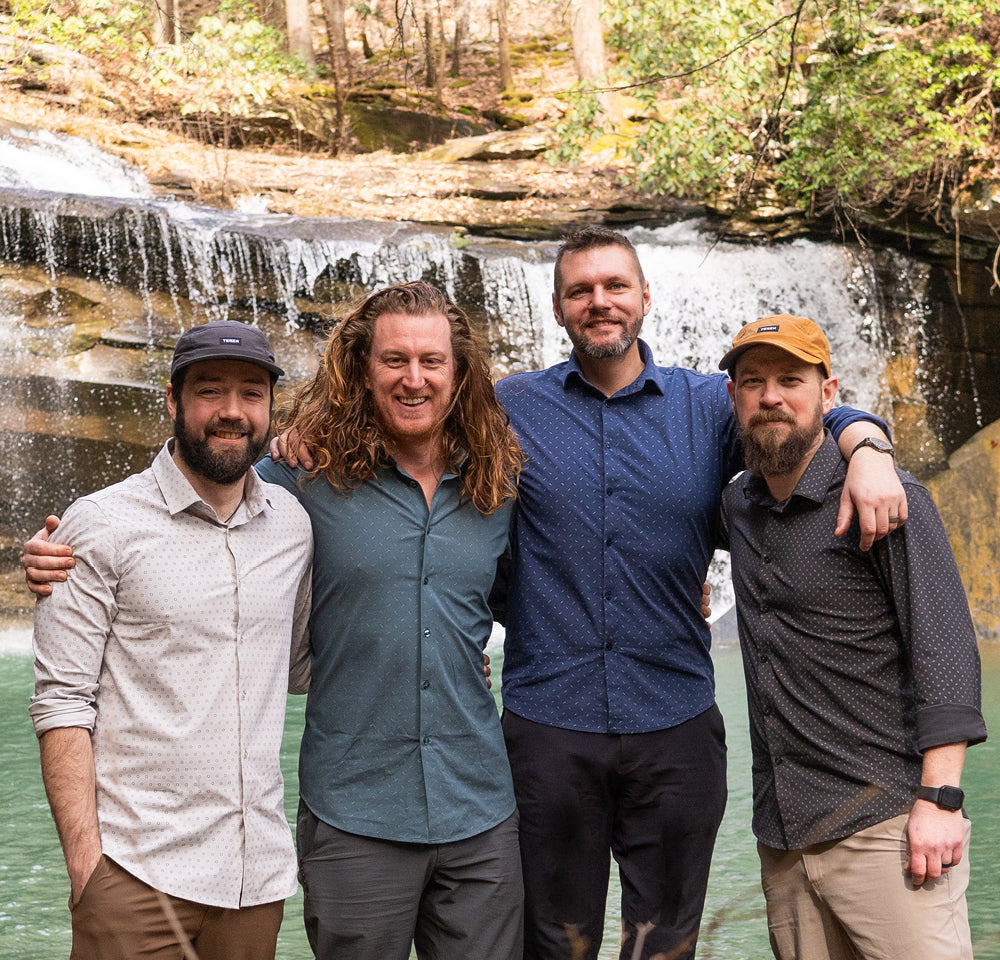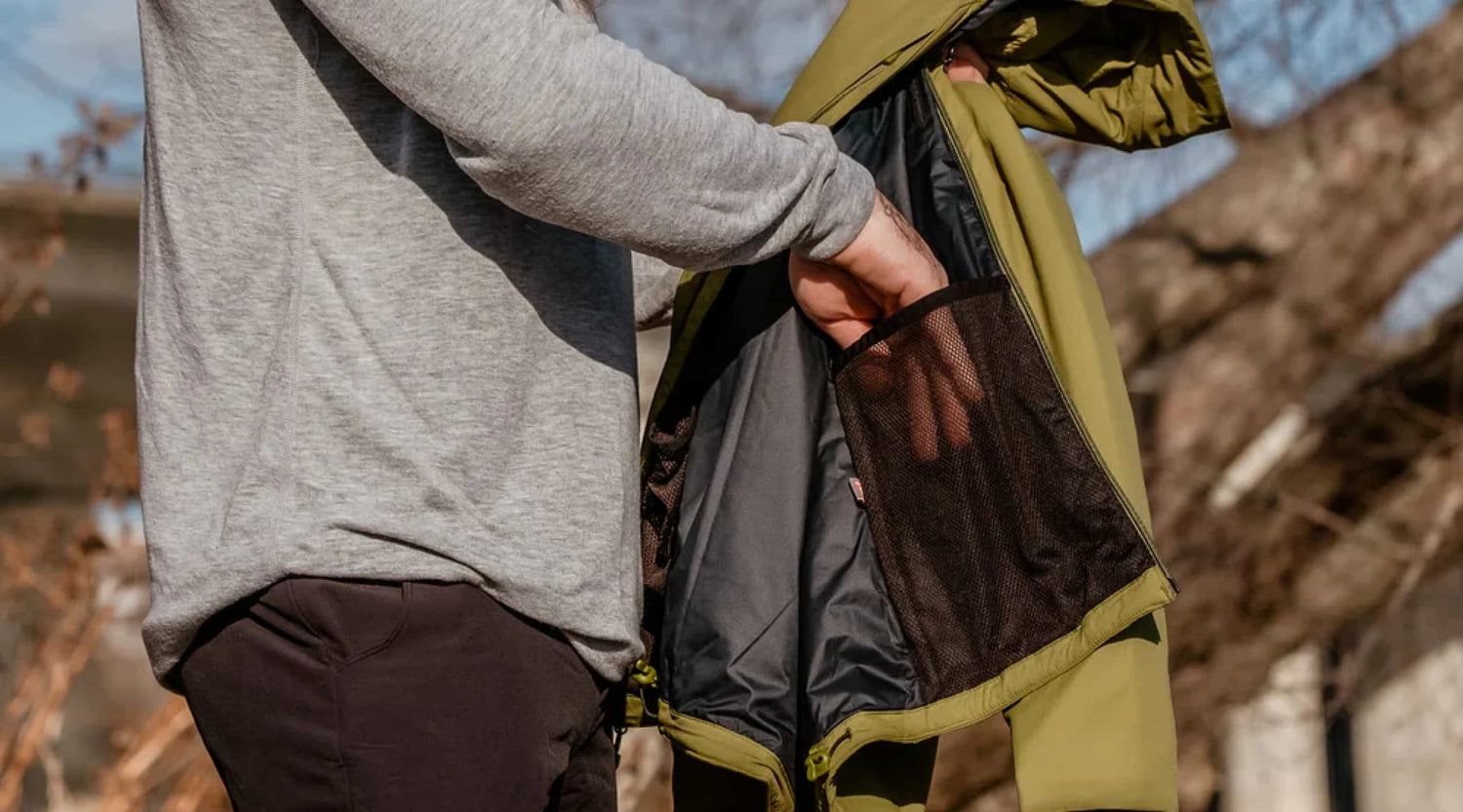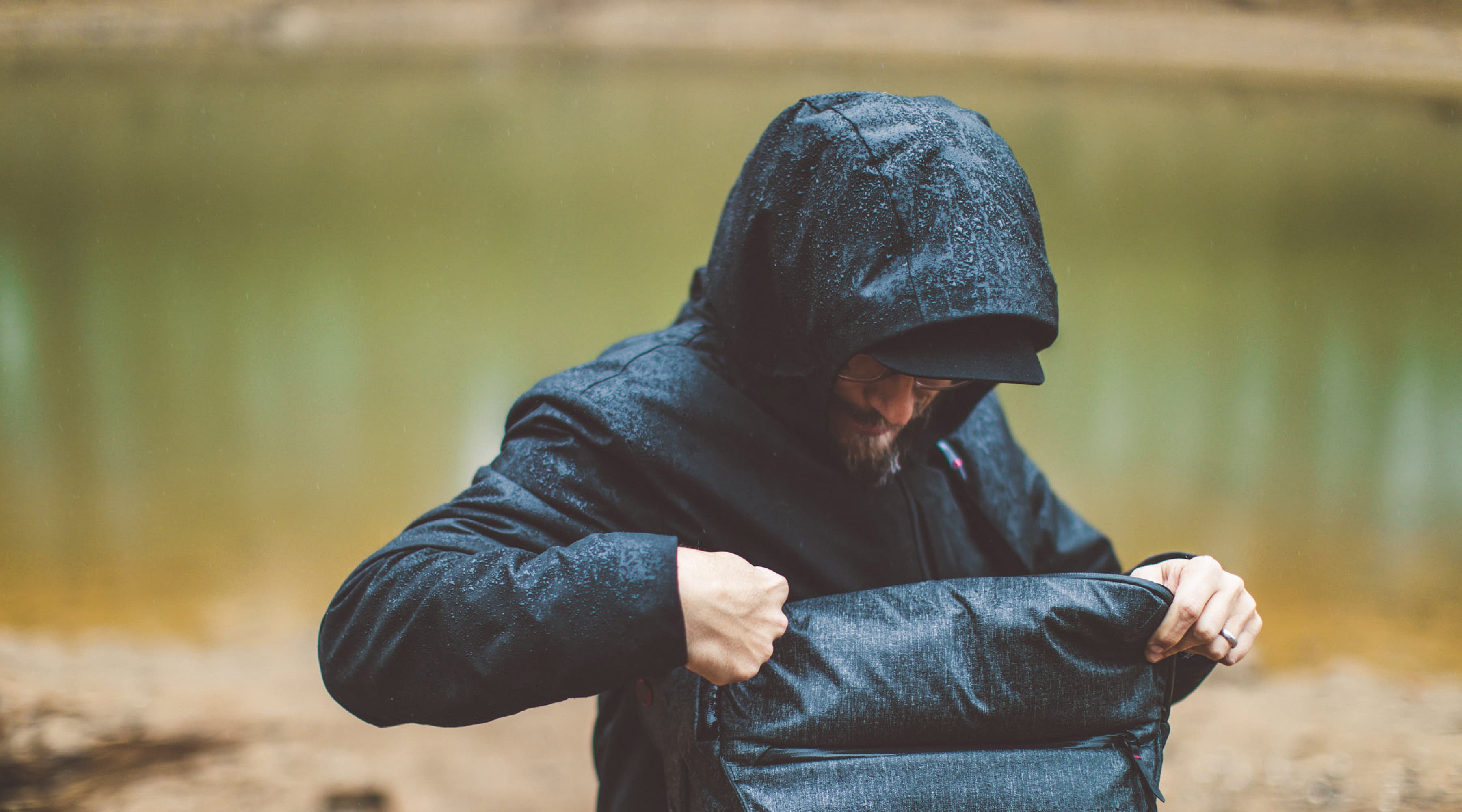Winter travel comes with its own set of challenges—not only is it cold but usually you’re luggin’ around bulky gear, unpredictable weather, and the constant battle between staying warm and overpacking. And when you over pack or have too heavy of a coat on, that's when you begin to sweat–we’ve all been there.
But packing light doesn’t mean freezing your ass off either. With the right strategy and a few space-saving pro-tips, you can keep your go bag light and still be ready for anything. Before we dive in, cold can often mean wet. Therefore, keeping warm often starts with staying dry. Moisture wicking and breathable clothing will help keep you comfortable and stop sweat from building up against your skin which eventually leads to shivering.
1. Know Your Trip: Layering vs. One Warm Coat.
Packing for cold weather isn’t one-size-fits-all. The best approach requires you to consider your destination, activities, and how much time you’ll actually spend outside. (or inside)

If You’re Constantly in and out of the Cold: Go With Layers.
For trips where you'll be bouncing between outdoor adventures & indoor hangs—think hiking in the morning, brewery hopping at night, or urban exploring—a layered system gives you the flexibility to adjust to temperature changes. Also, even without considering your activities–winter in different regions (like Chattanooga, TN in the winter) might require a layered system with cold mornings and hot afternoons.
-
Base Layer: A moisture-wicking, insulating tee like the TEREN Traveler Tee keeps you dry and comfortable. Merino Wool is naturally temperature regulating. Check out more here where we dive into the fabrics we use and why.
-
Mid-Layer: This is your cozy layer. Think sweatshirt, flannel or fleece. Our Daily Driver Fleece wins out against the former options because it is both breathable and works better than the other two when it’s wet.Lightweight synthetic fabrics will shed moisture much better than fabrics like cotton and be useable again for more adventuring the next day.
- Insulating Layer: A lightweight insulated jacket, like the TEREN Daily Driver Puffy Jacket, adds warmth without bulk.Some people want both the Fleece & Puffy combo here but some pick one or the other based again on the trip / environment of the trip. The same wet consideration goes for your insulating layer: if your down jacket gets wet it is not an easy task to dry it out and now you're out a layer,whereas synthetic insulation will still keep you warm even when wet!
-
Outer Layer: A weatherproof shell protects against wind, rain, and snow while staying packable. The Cloudland Shell is the best waterproofness to breathability on the market making it an incredibly versatile outer layer for any occasion.
By layering up, you can shed or add pieces as needed, making it the ideal setup for active trips where you’ll be in and out of different environments. Pro Tip: a layering system is our recommendation for most adventures if you’re still unsure at the end, just go with layers.
It’s Cold Out But You’ll Be Inside for Long Periods: Bring One Heavy Coat.
If your trip involves minimal time outside—like heading to a work conference, visiting family, or sightseeing in a city where most activities are indoors—a single warm coat might be the better move. Or, if the temps are just so low enough to justify the big puffer, bring the bug puffer!
-
A high-quality insulated coat keeps you warm without needing multiple layers.
-
Once inside, you just take it off—no juggling multiple pieces or stuffing numerous layers into your bag.
-
It simplifies packing: one coat, one decision, less to carry.
-
The Campfire Puffy is that one coat to do it all coat in this scenario. It’s waterproof, fire-resistant, tear-proof and windproof. This thing is dang near indestructible.
2. Make Sure Your Outerwear Matches Everything.

This one sounds obvious enough but is crucial to prevent you from overpacking or packing two big outerwear pieces. Regardless of which route you take, your outerwear should work with everything else in your bag.
-
Stick to neutral, timeless colors—black, grey, navy, or earth tones—to keep things versatile. All of TEREN jackets / layers come in these classic colors.
-
Avoid flashy patterns or giant logos to blend in and not scream "tourist." The last thing you want is to stick out in a crowd, especially while traveling.
-
Choose a jacket that fits multiple settings. Whether you're hiking, dining, or commuting, your coat should look just as good at a café as it does on a trail. Some gear out there is overly technical looking which ultimately prevents it from fitting into various environments. Clean lines, classic colors and premium fabric allows all of TEREN gear to stay under the radar with maximum versatility. Shop All.
3. Space-Saving Packing Hacks.

-
Wear Your Bulkiest Gear. If your jacket takes up half your backpack, wear it on the plane. The same goes for boots!
-
Roll, Don’t Fold. Rolling compresses clothes and saves space. Bonus: it reduces wrinkles. (but who needs that with wrinkle resistant clothing…)
-
Use Compression Bags. Vacuum-sealed bags can shrink your clothes down to half their size. Honestly, I haven’t used vacuum-sealed bags but they seem so cool! My only question is does the pump you need take up the same amount of space that you’re saving? Who knows?! Leave a comment if you have the beta.
-
Pack Multi-Use Items. A merino tee doubles as a sleep shirt, and the Campfire Puffy packing into its own hood–works as a pillow on long flights.
-
Ditch the Extras. One pair of durable, water-resistant pants (like the TEREN Daily Driver Pants) beats packing three different ones. This goes for every layer. All of our gear is naturally odor resistant or enhanced with antimicrobial features–and this helps to pack light for any trip not just the wintery ones.
Pack Less. Adventure More.
Packing light for cold-weather travel isn’t just about saving space—it’s about freedom. Less luggage means less hassle, fewer baggage fees, and more energy spent enjoying the adventure instead of lugging around a heavy pack and sweating your tail off in the airport.
With smart planning and the right gear, you’ll be warm, comfortable, and ready for whatever winter throws your way—all without overpacking.






